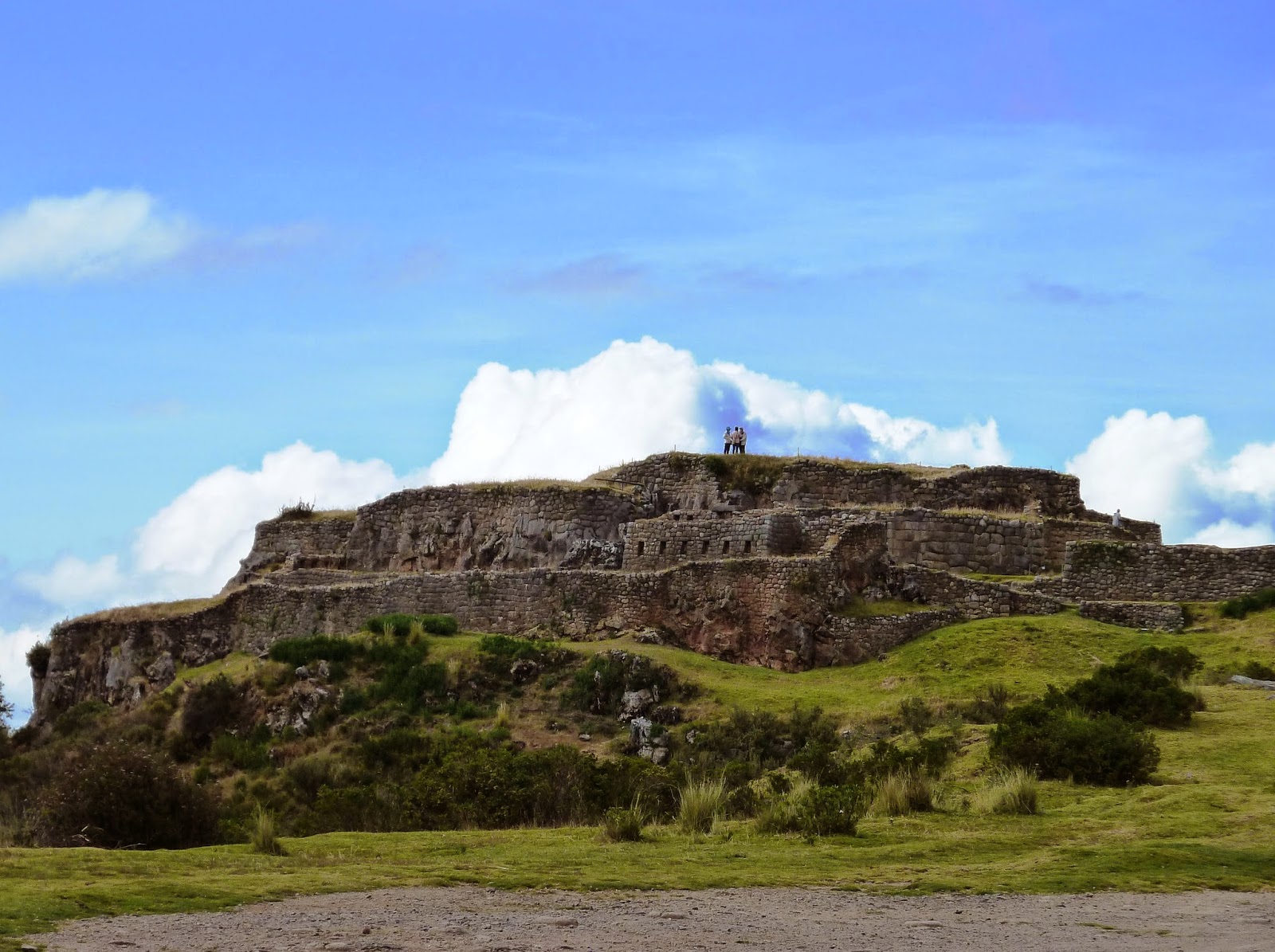There are several sites of Inca ruins quite close to the city of Cusco. Initially, I had incorrectly assumed that we could just take a taxi to one of them, spend as much time as wanted and then grab another taxi to go to the next. Javier informed us that things don't work that way in Peru. There are not taxi drivers hanging around at all the tourist site like I had supposed. He provided a driver for us, and Monday afternoon, June 9, 2014, we visited Saqsaywaman (say "sexy woman"), Q'enqo, Puka Pukara and Tambomachay.
Saqsaywaman is located on a steep hill behind the city of Cusco not far from the large white statue of Christ. Here are the remains of a three-tiered fortress and esplanade. The fortress walls were built in a zigzag form with some of the stones possibly weighing as much as 200 tons! It was built from 1431-1508 and was subsequently dismantled by the Spaniards from 1537 to 1661. They took the smaller stones and used them to construct buildings in Cusco. This site contains some of the most amazing example of Inca stonework. Just look at the enormous stones!
Q'enqo was a religious center designed to worship fertility, and the name means "labyrinth". The whole structure is said to be built in the shape of the sacred puma. Sacrifices and mummification took place within the cave and on top there may have been an astronomic observatory. The large stone monolith of at the front of the structure was defaced by the Spaniards in their attempts to do away with idolatry. The building below is a representation of a traditional Inca home. They adorned the roof with various offerings to their Gods. The Spaniards then added the cross. The red flower pictured below is called "Qantu" or Cantuta, and is the national flower of Peru.
Puka Pukara is just a fun name to say! It is located about 4 miles from Cusco and was a place of lodging and an administrative/military headquarter. Located in a beautiful lush green valley, it was also a warehouse for food. The name means "Red Fortress". I could picture myself living in a little hut in the nearby mountains and loving the views! (If you are noticing that Michael looks a little "off" in these photos, you'll soon know why!)
Tambomachay is just half a mile from Puka Pukara and the name means "resort". Two aqueducts provide spring water at this site year round, and it is known as "The baths of the Princess". It was built around 1500 with limestone found nearby. There are fountains, hillside farming terraces and an advanced water system with channels that were used as ceremonial streams. Water was worshiped as the source of life. You will also notice that the elevation around Cusco is over 12,000 feet! That's a tremendous change for someone who has been living at sea level for a couple of years. I was concerned that I would get altitude sickness in Cusco, but had no problems. (Could it be the coca tea that I was told to drink at the hotel?) Michael, on the other hand, was turning quite green and complaining of severe headaches and stomach pain by the time we arrived here. In fact, we nearly had to carry him back to the van by the time we left this sight.
When we arrived back at the hotel, Michael crawled into bed where he thought he might die! He was so terribly sick! I was fearful that our tour of the sacred valley and travels to Macchu Picchu the next day were going to be forfeited. The Lord's tender mercies were extended to us and after a long miserable night, Michael awoke the next morning feeling 100% better. Prayers are answered - thankfully according our own will at times!



















































No comments:
Post a Comment